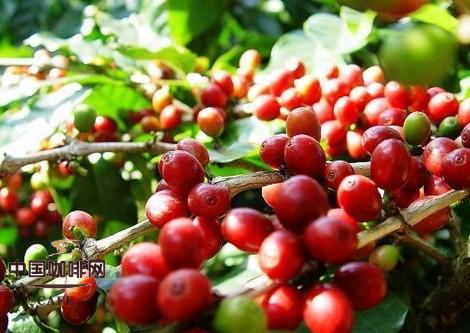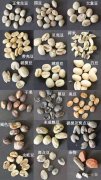Brazilian coffee making technology Brazilian coffee beans
Let's talk about desizing. The desizing method was introduced to Brazil 25 years ago by Pinhalense, a well-known machinery and equipment manufacturer. Desizing is the second most popular way to treat raw coffee beans in Brazil, and Brazilians like to call it "Cereja Descascado" ("Descascado" means "peel" and "Cereja" means "fruit"). In Central American countries, desizing is also known as honey treatment. When using this method to deal with raw beans, the desizing machine is essential. The coffee treated by this method is extremely sweet and unique. The desizing machine separates the peel and pulp of the coffee fruit from the raw beans. After the desizing step is completed, the mucous membrane on the surface of the raw bean is washed to an ideal level with water before drying. What is unique about this method is that raw beans do not have to be fermented. As there is still a small amount of mucous membrane attached to the surface of raw beans, the drying process of raw beans must be fast to prevent coffee from spoiling and mildew. Once dried, raw beans are placed in a wooden box called Tulhas for a period of time to make the coffee taste and aroma more constant.
Semi-washing is now an outdated method of raw bean treatment in Brazil, which is easy to be confused with desizing, but in my opinion, semi-washing is unique. The coffee treated by semi-washing method has a very mellow taste and high sweetness. this method requires the grower's operation technique and experience very high. if something goes wrong, the coffee will become difficult to swallow. Like the desizing method, people first use a desizing machine to desize the fruit, but the difference is that the semi-washing method requires the removal of as much mucous membrane as possible from the peel, pulp and surface layer of raw beans. In Central America, people wash the fruit directly with a washing machine after desizing, so this method is also known as mechanical washing. The processed raw coffee beans are very clean and can begin to dry without fermentation. Semi-washed coffee dries quickly at constant temperature, so it tastes better and purer, less moldy and fruity than other slow-drying coffees. finally, let's talk about washing. Although many Brazilian coffee growers have recently expressed great interest in washing, the demand for this kind of coffee is still not high in domestic and foreign markets. The reason is that washing Brazilian coffee has a poor reputation in the international market, and the washing technology in Brazil started relatively late and immature. The treatment of washed coffee is very similar to that of semi-washed coffee, but it needs fermentation to remove the mucus from the surface of raw beans. Washed coffee usually has a pure taste and pleasant acidity.
These are the four most common methods of raw bean treatment in Brazil. once the treatment is completed, there is only parchment left on the outside of the raw bean, and the coffee will be finally screened to meet the standard of fine coffee. Coffee beans with parchment are sent to a unified drying plant, where coffee is finally sorted, bagged and ready for export. Factory workers first use vibration screening to grade coffee according to the density of raw beans. You know, density is one of the important criteria to measure the quality of coffee. The graded coffee beans will be cleaned again, and the cleaned coffee beans will be sent to the laboratory for final color grading. The chromometer uses a laser to detect imperfections or stains on the surface of coffee beans. Generally speaking, in Brazil, the level of mechanization of raw bean sorting is very high. Machining can not only avoid unnecessary mistakes, but also help solve the problem of labor shortage caused by high wages.

Important Notice :
前街咖啡 FrontStreet Coffee has moved to new addredd:
FrontStreet Coffee Address: 315,Donghua East Road,GuangZhou
Tel:020 38364473
- Prev

Excellent Cup Coffee Competition
The Excellence Cup project and trademarks are currently owned and managed by the American Fine Coffee Alliance (ACE, a non-profit organization). Ace cooperates with the Excellence Cup Project (Cup Test Competition) to complete cup test screening and online auction of premium coffee every year, and to suggest and promote anything related to the improvement of coffee quality, with the aim of selecting a model of boutique coffee in the host country.
- Next

What does a roaster do? how does he become a coffee roaster?
1. I will check the condition of the defective beans when I buy the cooked beans. If it's sun beans, check the proportion of beans that look very white (uncolored). If there are more than one of these beans, the coffee brewed from this packet of beans is bound to have an obvious peanut flavor. From this we can judge that the baker does not pick ripe beans. After that, whether it is in the sun or in water, we should see if it is bright.
Related
- Beginners will see the "Coffee pull flower" guide!
- What is the difference between ice blog purified milk and ordinary milk coffee?
- Why is the Philippines the largest producer of crops in Liberia?
- For coffee extraction, should the fine powder be retained?
- How does extracted espresso fill pressed powder? How much strength does it take to press the powder?
- How to make jasmine cold extract coffee? Is the jasmine + latte good?
- Will this little toy really make the coffee taste better? How does Lily Drip affect coffee extraction?
- Will the action of slapping the filter cup also affect coffee extraction?
- What's the difference between powder-to-water ratio and powder-to-liquid ratio?
- What is the Ethiopian local species? What does it have to do with Heirloom native species?

